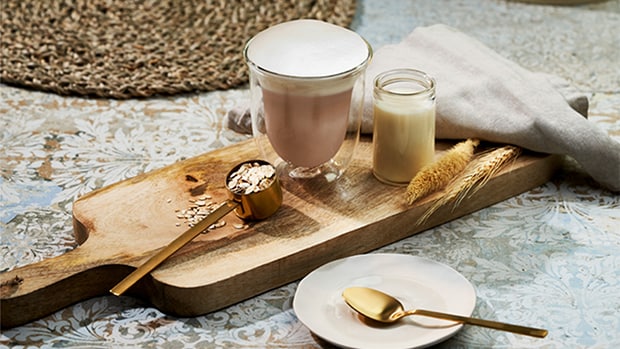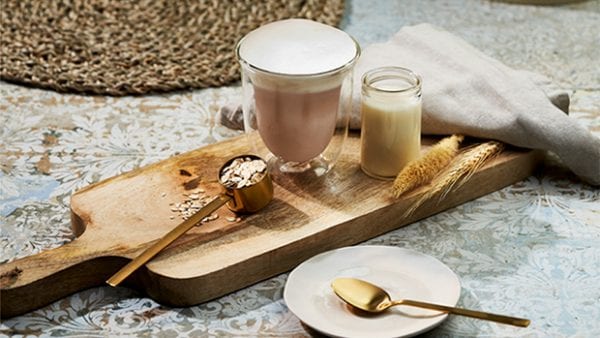- Beans & Roasters
- Sydney Coffee Lounge
The best coffee experience starts here
- Education
The best coffee experience starts here
- Magazine
- Recipes
- About us
The best coffee experience starts here
The best coffee experience starts here

Trends & Lifestyle
Tips & tricks for texturing milk into silky smooth microfoam
Once upon a time, people requesting their coffee be prepared with non-dairy milk were the minority, but nowadays cafes cater for all tastes, with a range of different plant-based milks. No longer just the prerogative of the health-conscious or prescribed for people with dietary restrictions, plant milk is now mainstream, and “oat flat whites” and “almond caps” are de rigueur.
When creating milk-based coffee at home, bear in mind the flavours offered by different plant-based milks, and consider how these may complement your choice of coffee beans, or not. For example, oat milk tends to be the best substitute for dairy milk, albeit with sweeter flavour notes, while soy milk tends to have a stronger vegetal flavor, and can be difficult to pair with certain coffee varieties. Nut milks, such as almond, macadamia, or hazelnut, have flavours that complement most coffees, but be aware that even unsweetened options can be quite sweet.
Not all milks are created equal, some are easier to texture into smooth microfoam than others. This generally comes down to fat content: the more fat proteins, the more malleable the milk. Oat, almond, and soy milk tend to perform better than rice, coconut, or other nut milks, as the latter are too lean and do not pack enough fat.
We recommend using ‘barista quality’ plant milks, which are processed especially for coffee, and have balanced flavours, with just the right amount of fat, so are easier to texture and tend to form richer, silkier microfoam. We like working with Australia’s Own Barista range.
Creating barista-quality coffee at home is even easier with the LatteCrema Hot Technology, created by De’Longhi. This precision aerodynamic system, featured on several De’Longhi fully automatic, bean-to-cup coffee machines, is capable of creating dreamy, creamy microfoam, with the simple touch of a button.
When making your coffee at home, try to use cold milk straight from the fridge, and do not let it sit and get warm, as cold milk tends to be easier to texture, and consistently makes better microfoam. This is where our LatteCrema Hot Technology is superior to other manufacturers, as the carafes are double-walled and made from thermal plastic, so the milk within stays colder, for longer. Any milk that is left does not go to waste but can be used again, as the carafe can be stored directly in the fridge.
Try to pair the temperature of the microfoam with the temperature of the coffee: cold microfoam for iced coffee, and hot microfoam for hot coffee. Mixing up the two tends to result in the microfoam collapsing, sadly, into the coffee, which nobody wants. If you are texturing your milk manually then aim for the industry-standard temperature of 65°c.
Whether enjoying milk-based coffee prepared with dairy or plant milk, De’Longhi’s technology is designed to ensure your at-home coffee experience is easy, efficient, and exceptional.



Testo vario
Join us
Policies
Support

